
3 minute read
Music Department Adapts Creatively to COVID
The impact of COVID on teaching, curriculum, and pedagogy has been profound in all grades and all departments. Music, however, faced some of the greatest obstacles. No singing indoors. No woodwind instruments. State requirements of 12 foot spacing rather than six. What’s a school that takes the benefits of music education seriously to do?
Pre-Nursery through 1st Grade
New to Green Vale but not new to teaching music to young children, Jessica Beja has leaned into what is allowed: singing outside, distanced and masked, long into the mild fall and as soon as warm weather arrived in March. Green Vale’s vast amphitheater was uncannily helpful in providing outdoor seating and even acoustics right outside the door of the usual music classroom.
Many of the traditional components of early music instruction involve shared soft materials, hand-holding and partner clapping games, or other activities that are too risky or impossible due to distancing. During the colder months, children instead used materials that were easier to clean, including hand drums, rhythm sticks, triangles, and maracas, exploring the timbres of different instruments and their contribution to a song or style of music. Lessons also added body percussion and unique movement to songs. Speaking or chanting folk songs and traditional nursery rhymes was a safe alternative to singing while still engaging with rhythm. Often, Mrs. Beja would sing or play a song and students would engage through movement and instruments. In this way, they still continued to work on expression, sound differentiation, following instructions, and synchronizing with peers. These young children still had an opportunity to create a "performance" by recording a song that was shared with parents to celebrate December holidays (Early Childhood) and Halloween & Lunar New Year (1st Grade).
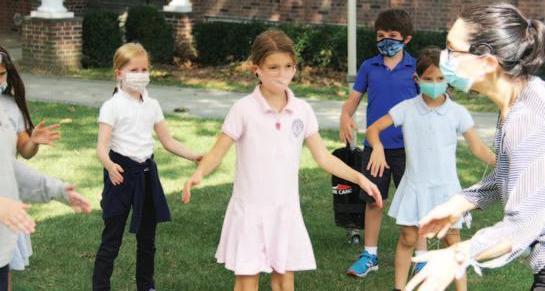
2nd & 3rd Grades
Green Vale’s recently renovated chorus room is spacious, but not so much that spacing of 12 feet between masked singers is feasible. Therefore, Ms. Chen has seized the opportunity to offer a rich program of music appreciation and literacy. In particular, 2nd and 3rd graders have done many activities involving rhythmic poems and instruments. Ms. Chen's students can be heard singing outside as well. 4th-8th Grade Music Theory & Composition
During class periods normally devoted to instrument instruction, small groups analyzed performances and demonstrations to become more familiar with the nuances of different instruments offered in GVS’ band and orchestra.
Next, they moved on to music theory, note-reading and basic composition. Using Google’s “Flat”, a music notation program, students learned to write short pieces of music on their Chromebooks. They then took turns projecting their pieces on the big screen and having faculty musicians play them. Students are learning how to read and write notes in 3 different clefs:
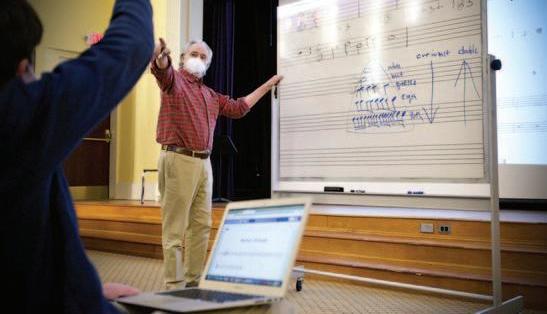
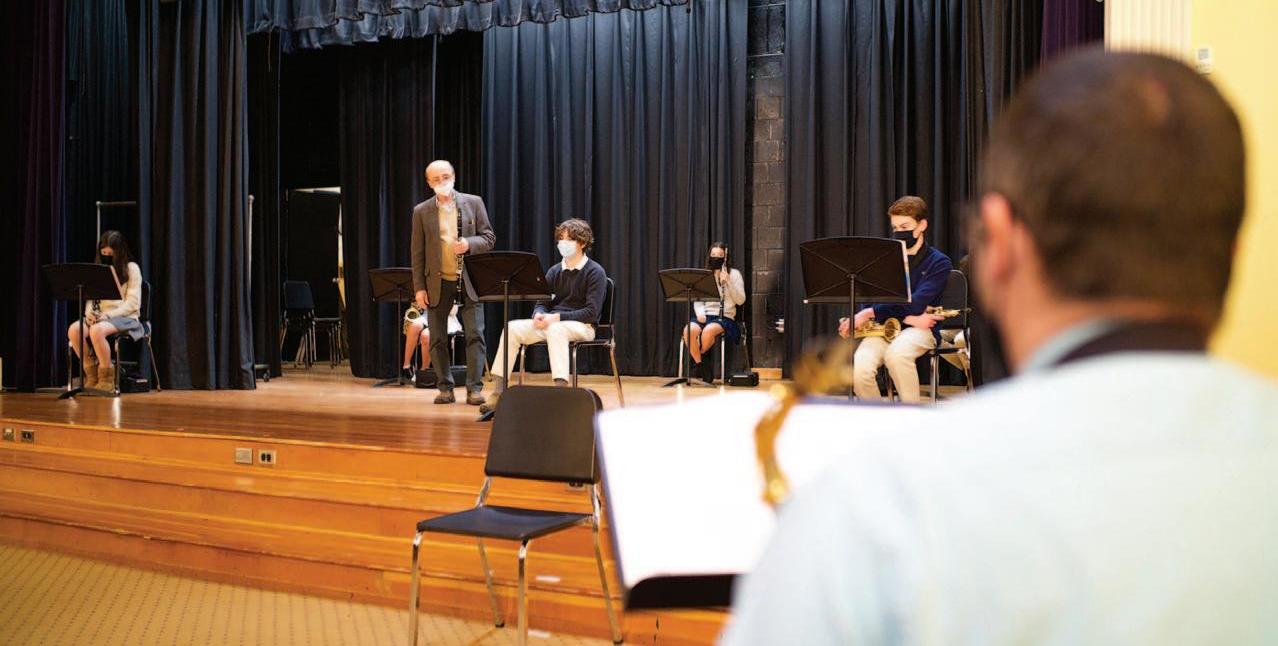
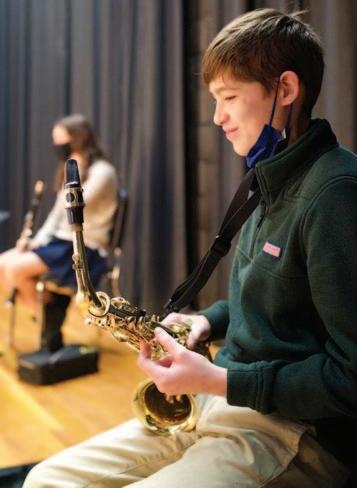
The Return of Instruments
New state guidance and new equipment allowed instrument lessons to resume in March for 5th-8th Grades. Wind musicians are spaced 12 feet apart, wear special “flap” masks, and use nylon bell coverings for certain instruments. String and percussion students remain masked and six feet apart. For safety, the full ensemble does not practice together. During those scheduled periods they continue to focus on theory and composition. With home practice teachers are recommending, students should be back on track and ready to perform choral, ensemble, and band concerts again next year.
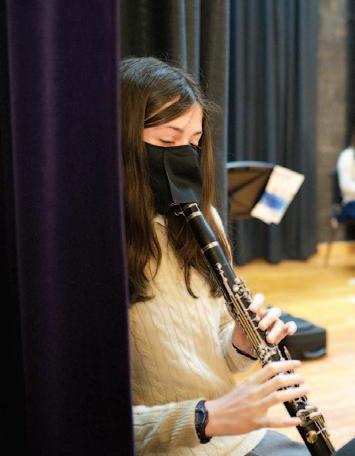
treble, alto and bass. They even practiced adding a harmony note to a melody. While they worked mostly in C major at the beginning, older students began to explore other key signatures and time signatures, as well as some more complex rhythmic ideas. This allows them to be creative while learning additional fundamental skills that will help them better read and understand music as they return to playing their instruments.
4th-8th Grade Music Appreciation & Literacy
Each grade level received exposure to music and famous performers or composers from different regions or cultures corresponding to their social studies or history curriculum. For example: 5th Grade studied classical Indian music, 6th Grade learned about music of the Middle Ages, and students of US history covered the evolution of American jazz and rock and roll. Music from China, the Middle East, Africa, Cuba, and Latin America was presented as well.
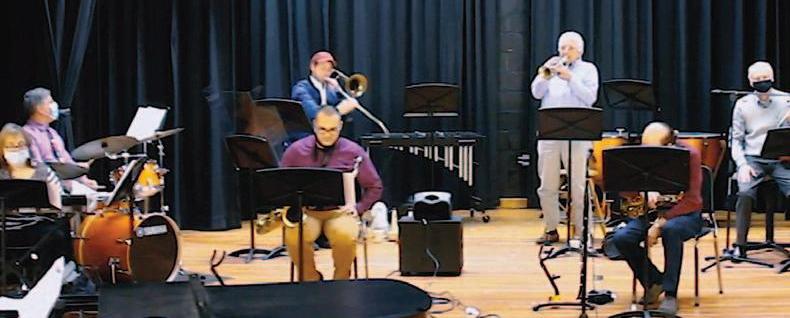
Take a Listen…
The music faculty — featuring Broadway and other professional musicians — performed live concerts for students and faculty. Hear the full concert on GVS’ YouTube channel.










